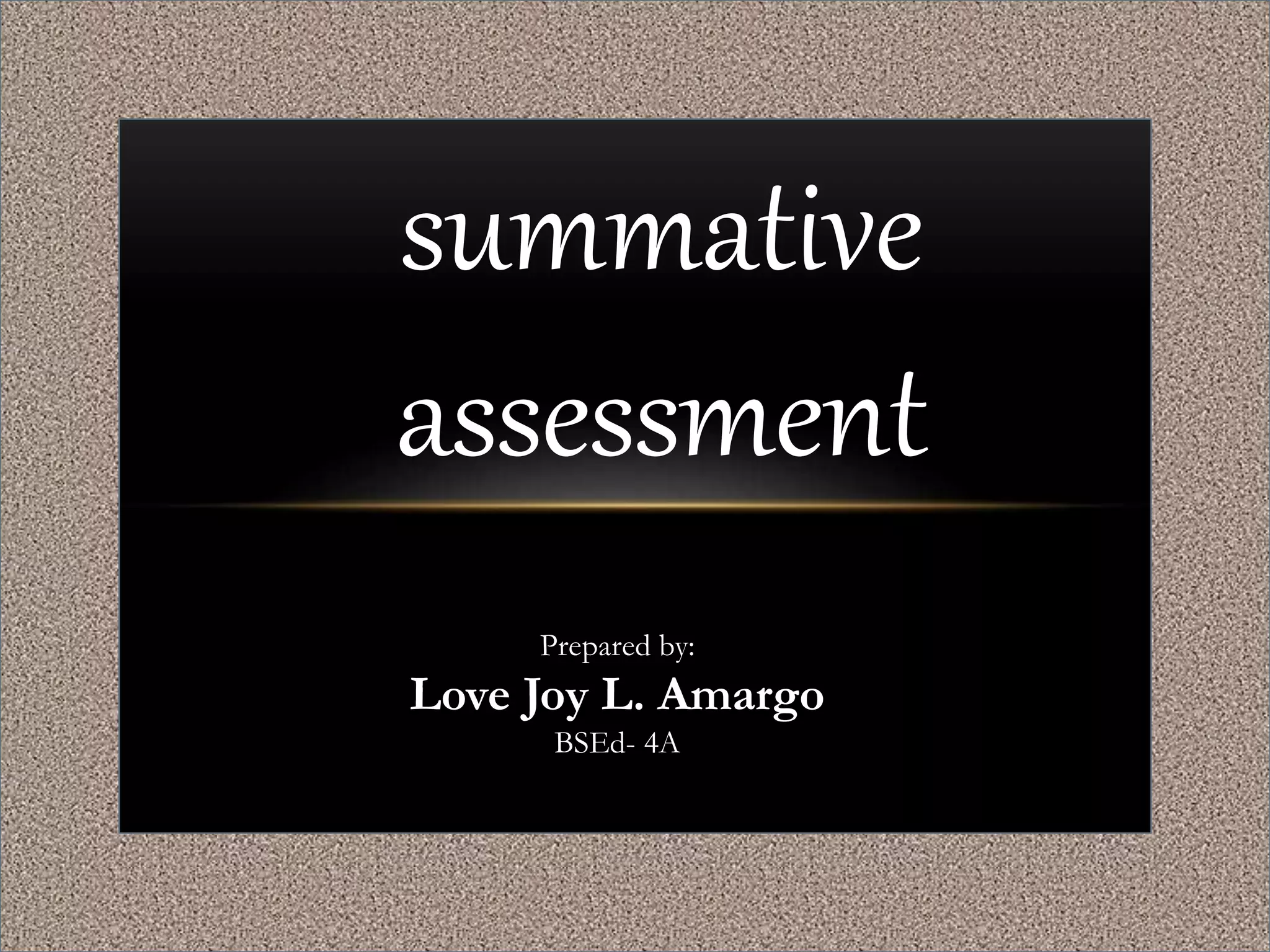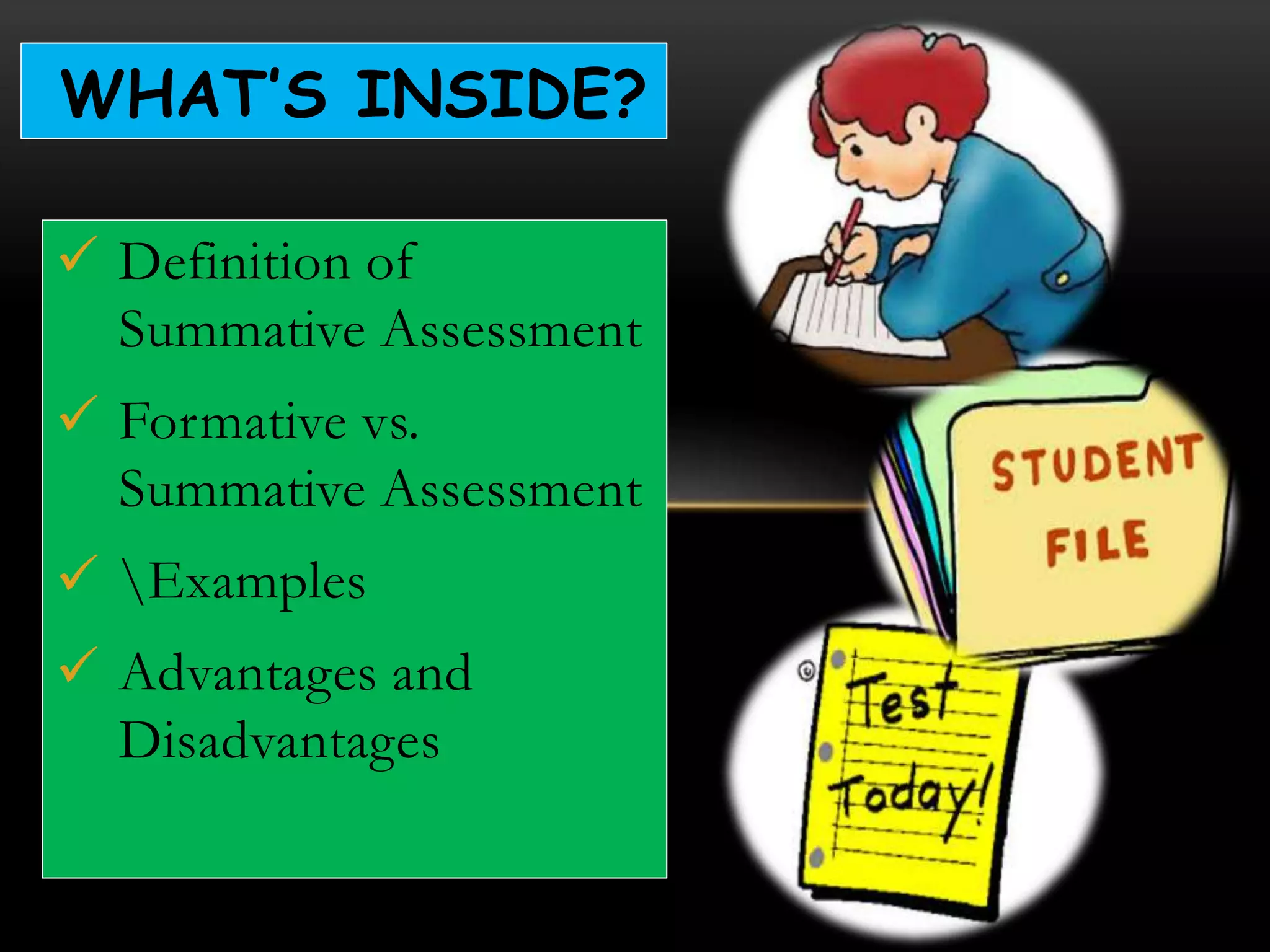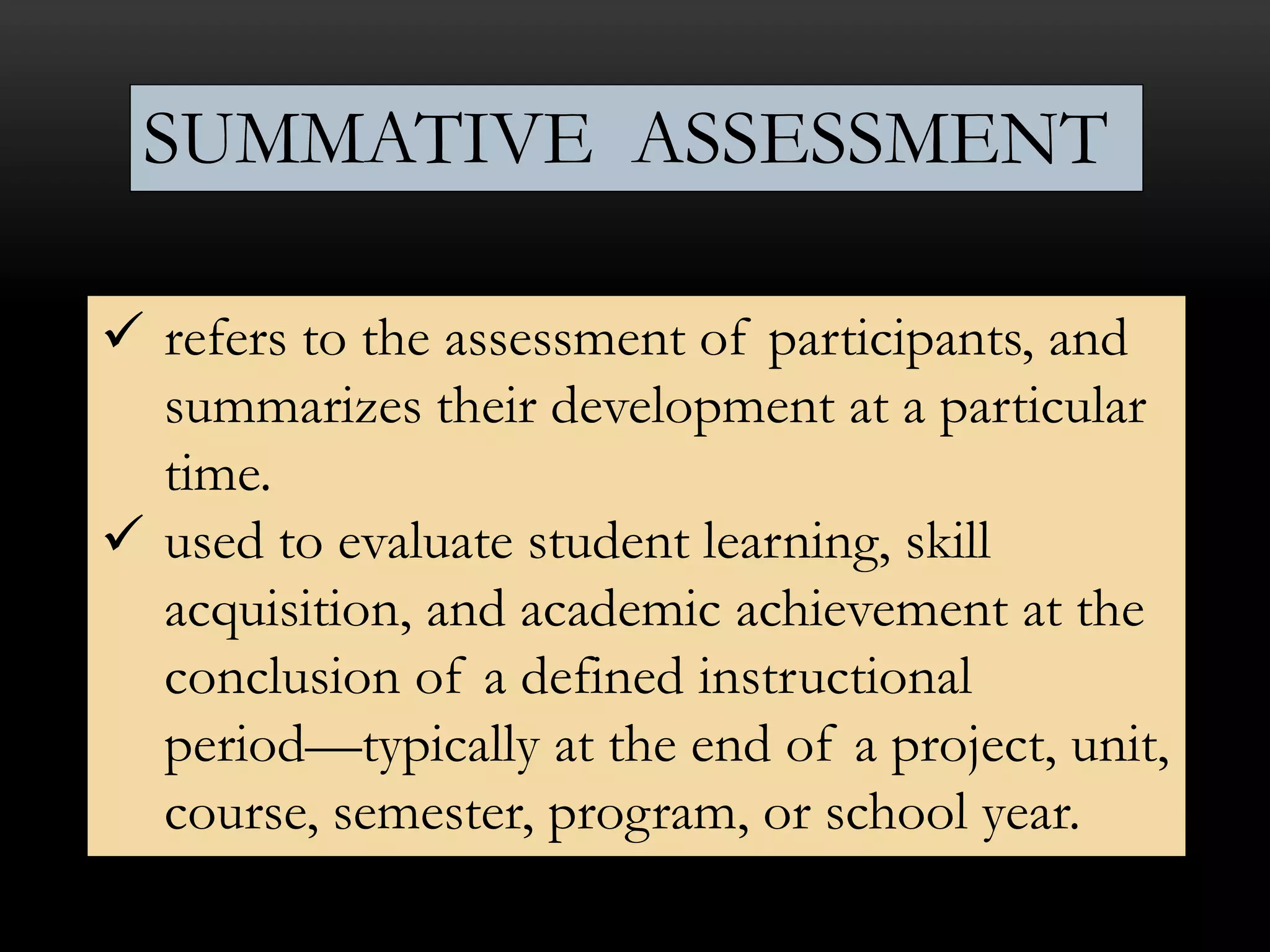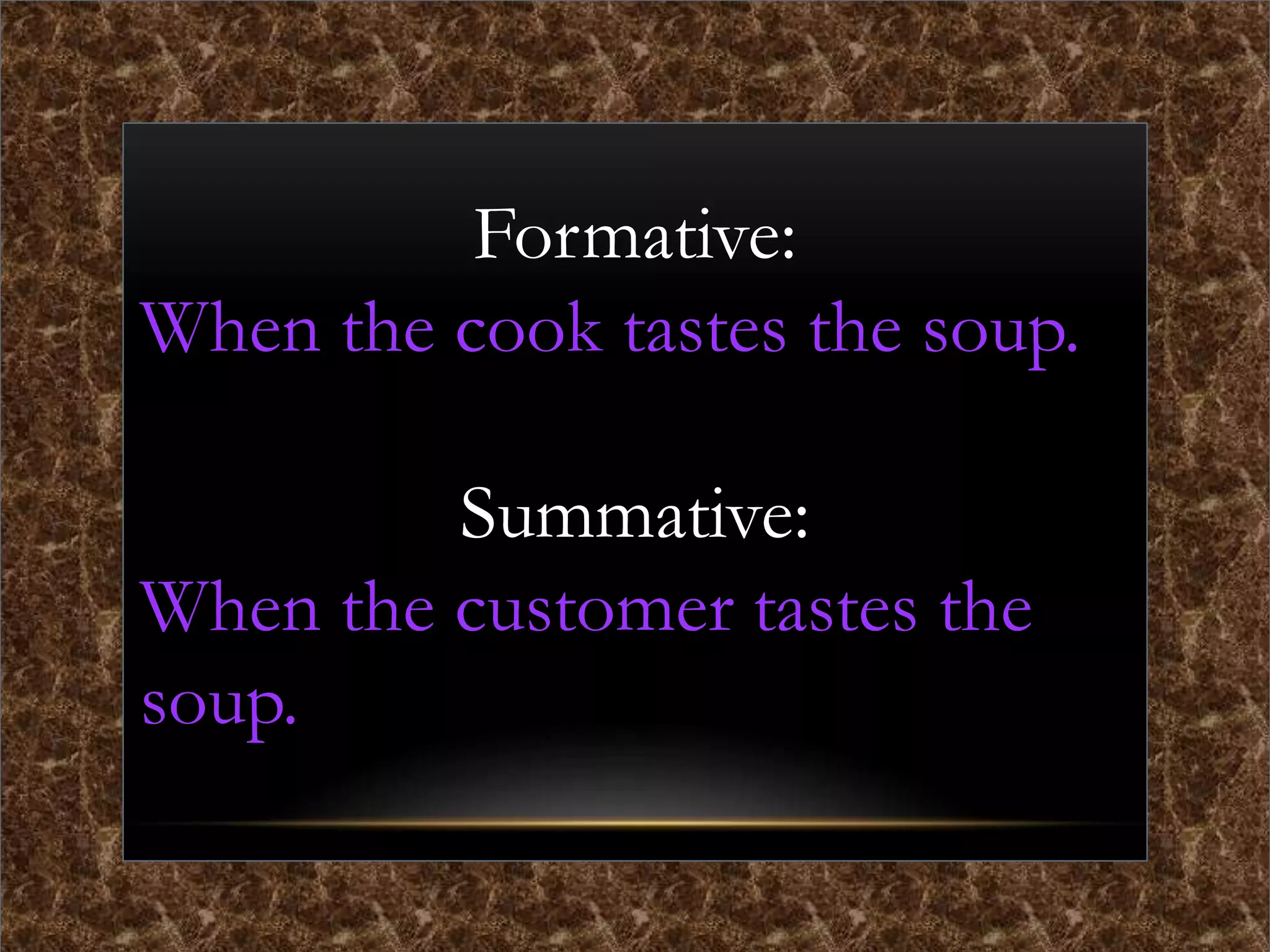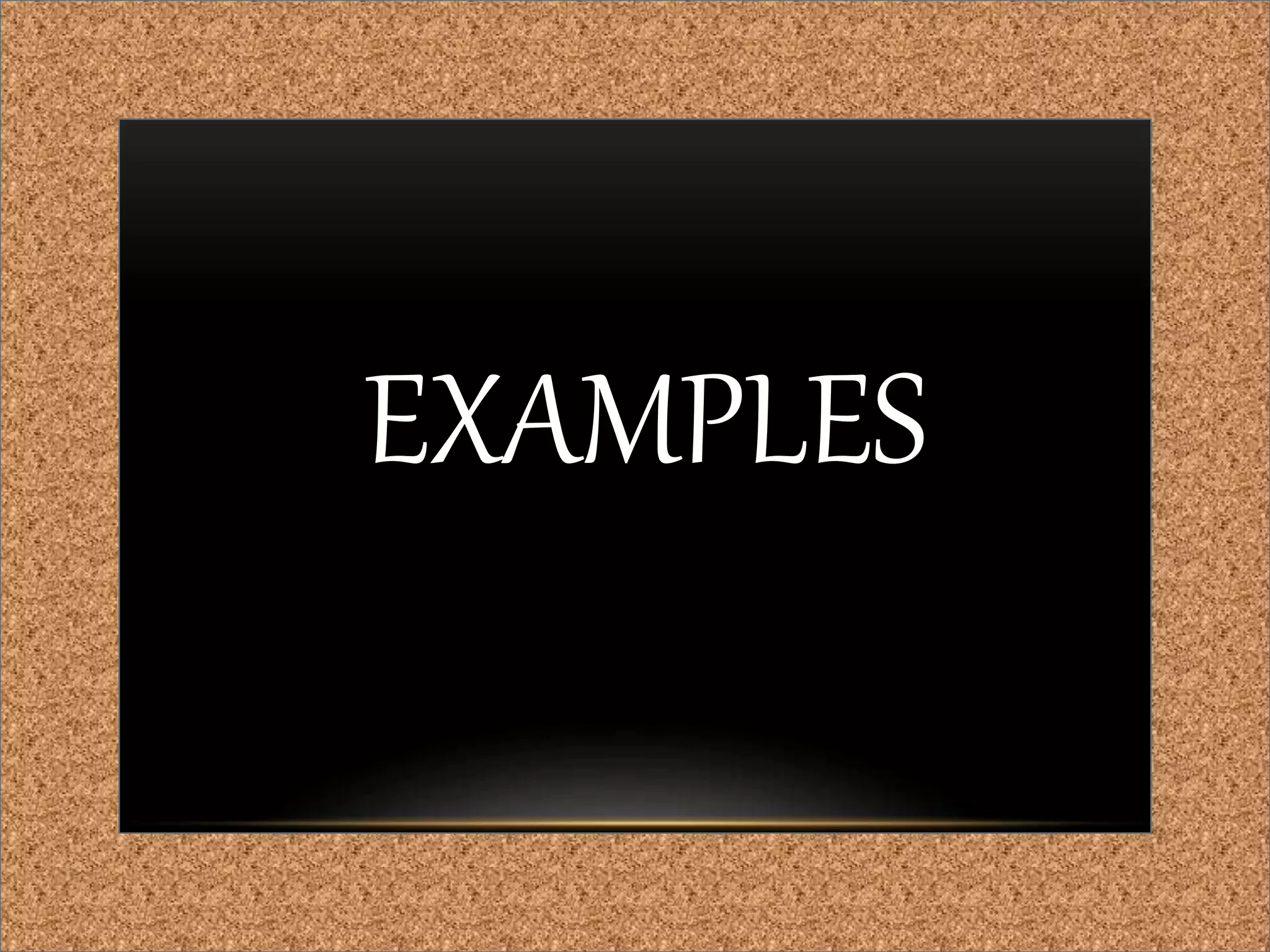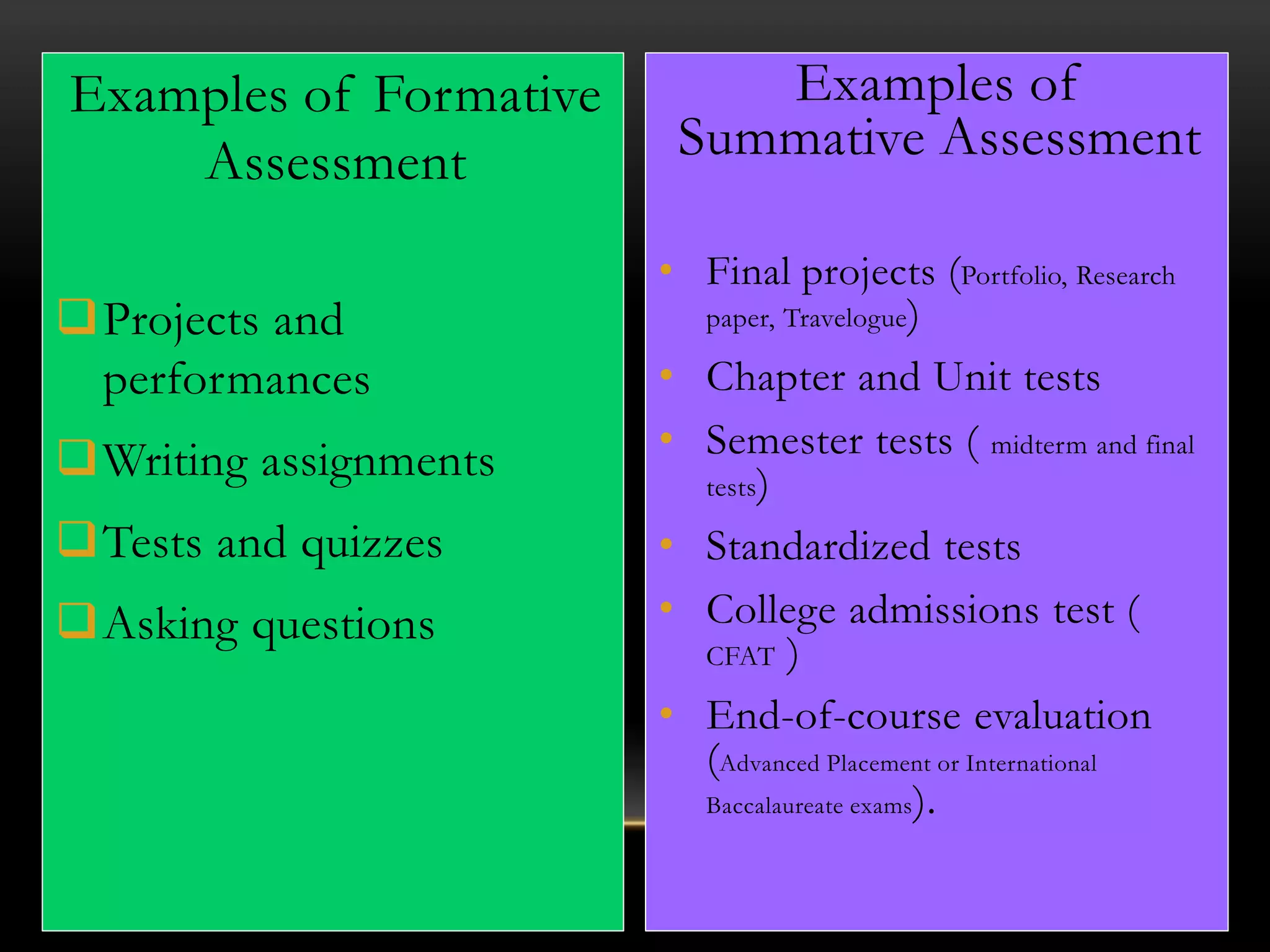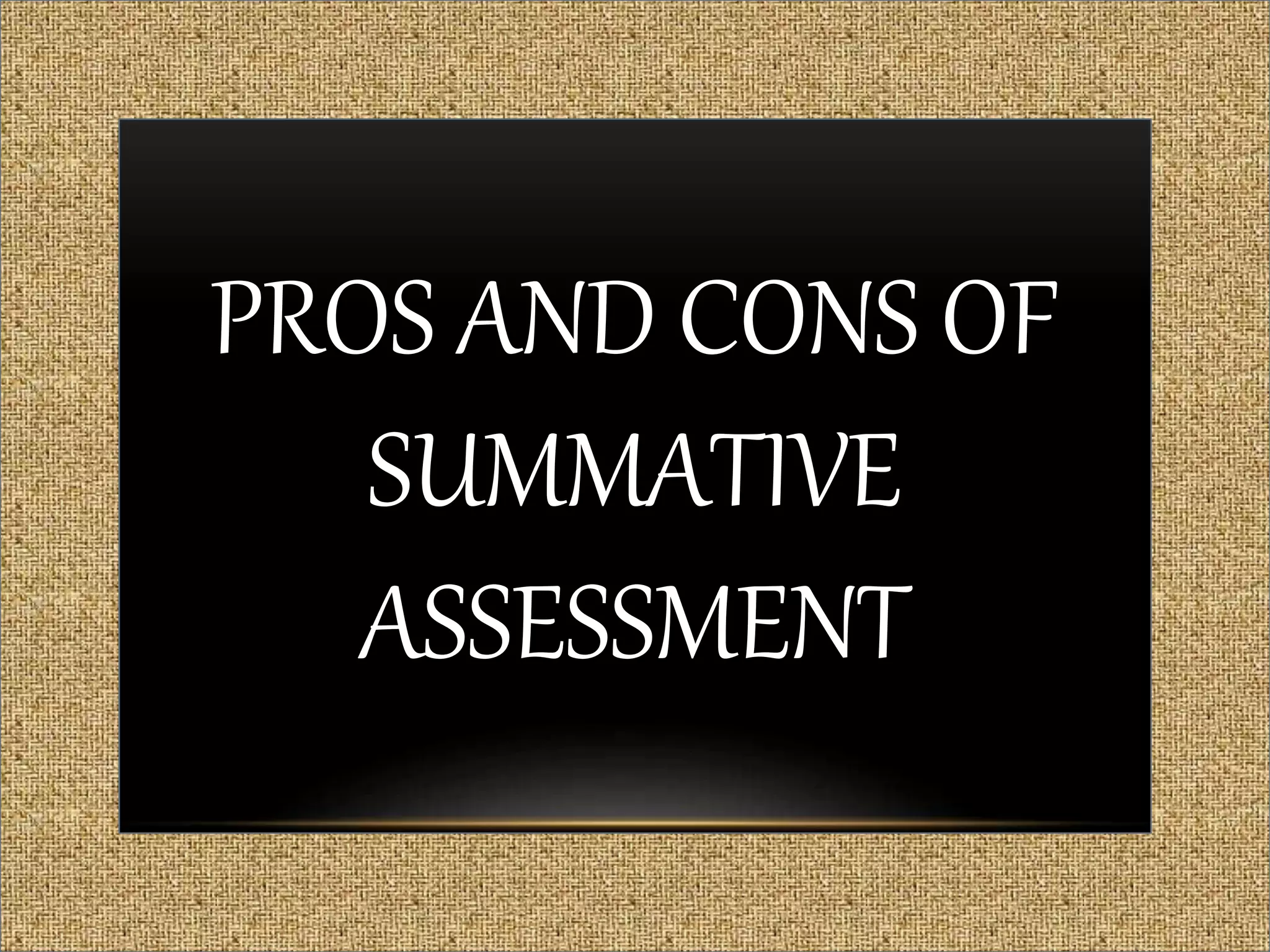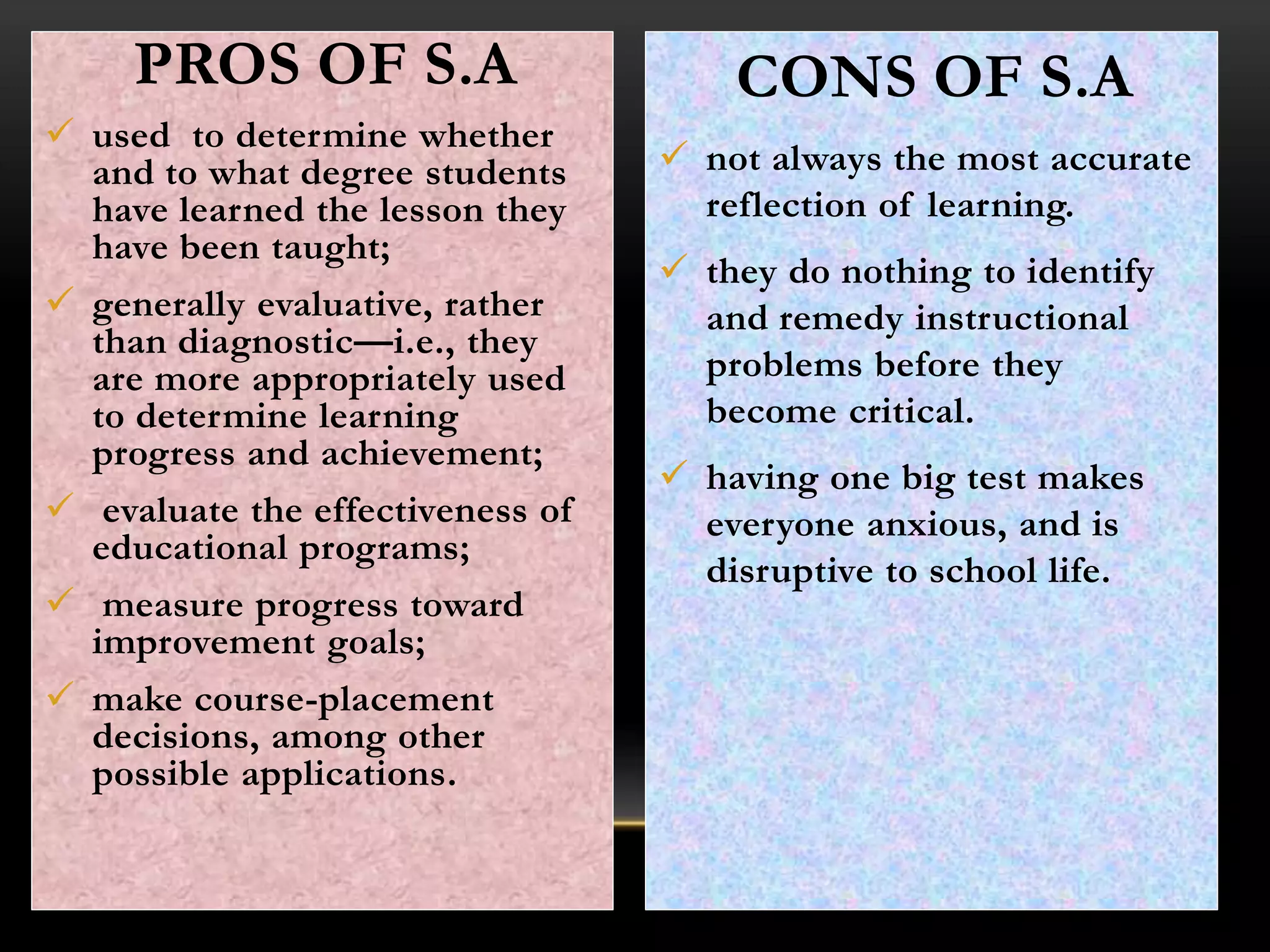Summative assessment refers to evaluating student learning at the end of a period of instruction, such as at the end of a project, course, or semester. It is used to determine if learning goals were achieved. Examples include final exams, research papers, and standardized tests. The purpose is to assess learning outcomes compared to benchmarks. Advantages are that it evaluates program effectiveness and student achievement and progress. Disadvantages are that it may not accurately reflect learning and does not provide feedback to improve instruction.
